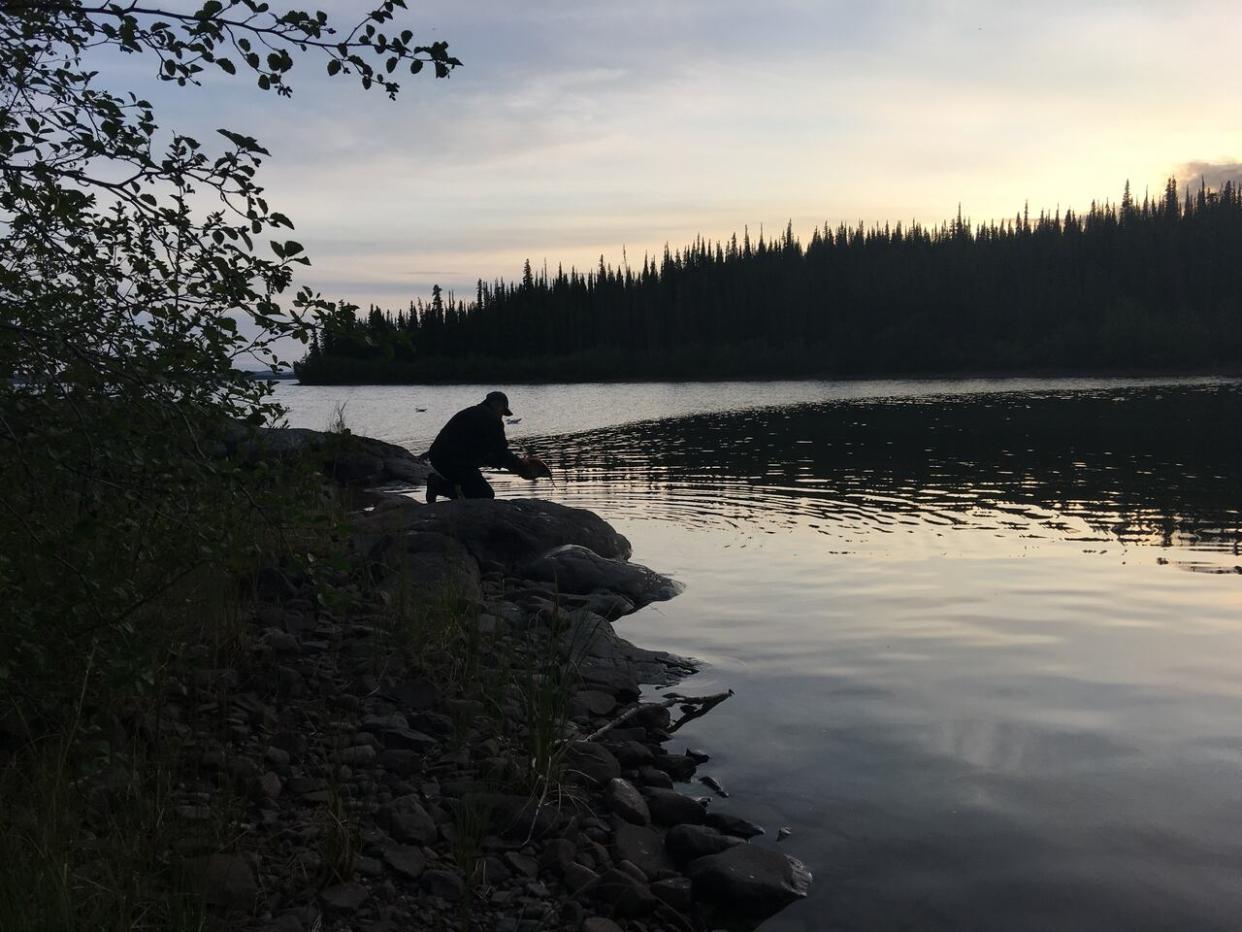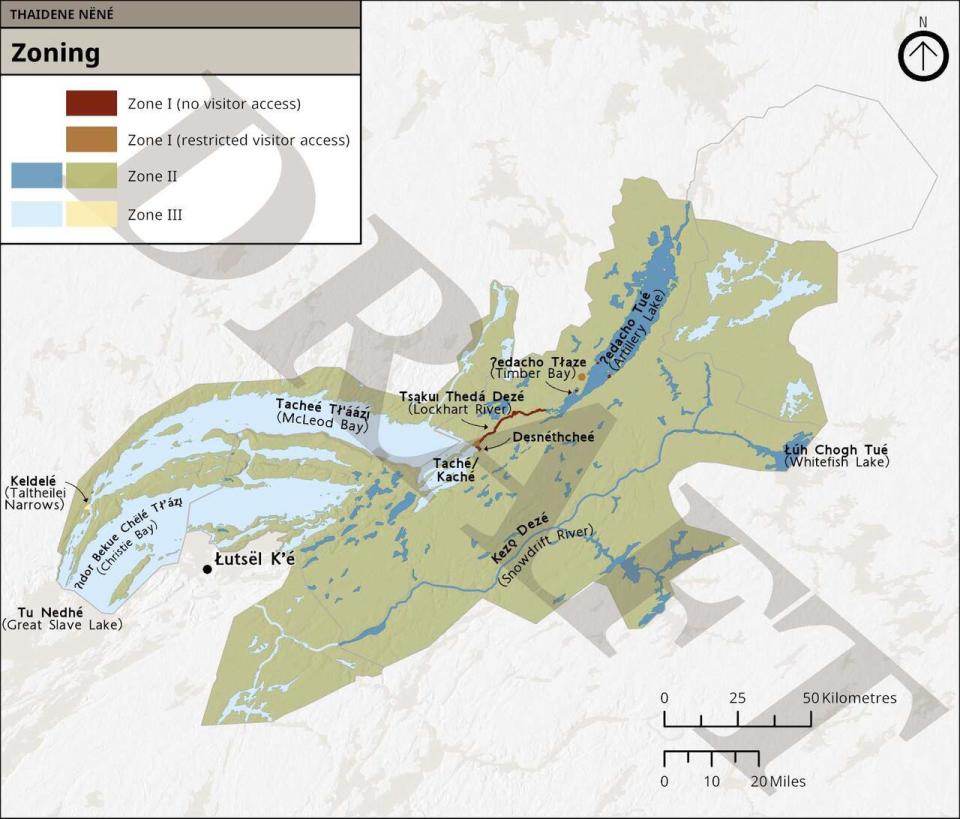Thaidene Nëné draft plan outlines how N.W.T. park will be managed

The board representing the Thaidene Nëné Indigenous Protected Area has released a plan detailing how it will manage the area, and it's asking for the public input on that plan.
Thaidene Nëné, the N.W.T.'s newest national park which was established in 2019, also includes a territorial protected area and a territorial wildlife conservation area.
The draft plan, Thaıdene Nëné badı xá which is referred to as a "relationship plan" rather than a management plan, includes usage restrictions for a few sites that are of cultural importance.
"Preservation is the key consideration," the plan says of those restricted areas.
According to the draft plan, the area is split into three zones with sites in zone 1 either fully restricted, or partially accessible with some restrictions. No motorized access is allowed in these sites.
Sites completely off limits to the public include Desnéthcheé, an area used every summer for spiritual gatherings for people from Łutsël K'é, according to the draft plan.
Dzén Kıń (Rat Lodge) and Tsá Kıń (Beaver Lodge) are other restricted areas as they are considered sacred.
Another completely restricted site is an island in Timber Bay where Gahdële, a powerful medicine man, is buried.

A map from the Thaidene Nëné Indigenous Protected Area draft management plan. (Thaidene Nëné draft management plan)
Parry Falls, a scenic waterfall, can only be accessed with permission from Łutsël K'é Dene First Nation. The restricted area stretches from the south end of Artillery Lake to the mouth of the Lockhart River and includes the islands in the area.
Licensed guides from a signatory Indigenous government will be allowed to use motorized boats for tours at the mouth of the Lockhart River, the plan says. Access is also prohibited in the river corridor.
Areas that the public can access with approval and a guide include some former village sites on the Lockhart River and in Timber Bay.
Zone 2 comprises the majority of the park and includes areas where "visitors have opportunities to experience the living landscape in remote areas with few to no services or facilities."
Motorized access isn't permitted unless by snowmobile or by charter or private jets that land on water bodies.
Zone 3 includes areas managed as natural environments, including Great Slave Lake and Stark Lake, where motorized traffic is allowed, as are some commercial leases.
Visitors can use the zone 3 waterways to access zone 2 shorelines, the plan says.
This is the first plan for the management of Thaidene Nëné, meaning what is included will be foundational, the draft plan says. If approved, the plan would be in effect until 2034.
Other objectives outlined in the plan include using Dene Yatı, the Indigenous language, in governance, planning and community engagements and ensuring young people can learn from their elders.
The operations of the park are the responsibility of the Łutsël K'é Dene First Nation, Northwest Territory Métis Nation, Parks Canada and the Government of Northwest Territories.
Deninu Kųę́ First Nation and Yellowknives Dene First Nation also play a role in Thaidene Nëné through agreements.
There will be public engagement sessions about the draft plan, including in Fort Smith on April 9, Fort Resolution on April 10, and Hay River on April 11.
The N.W.T. government's online feedback portal is available until April 20. Parks Canada's website says people can submit their thoughts up until April 28.
Both websites say the feedback will be used to help shape the plan.


